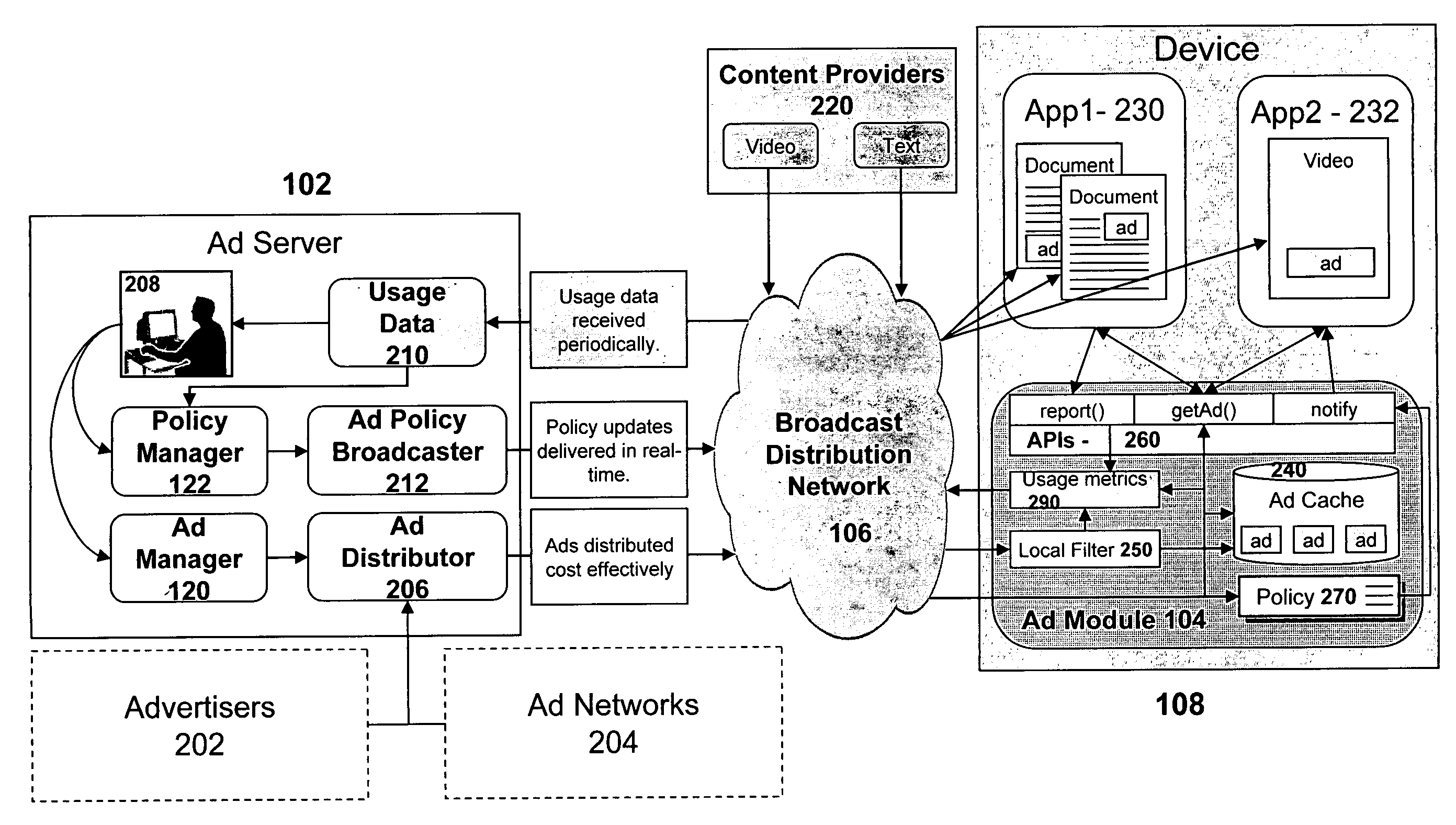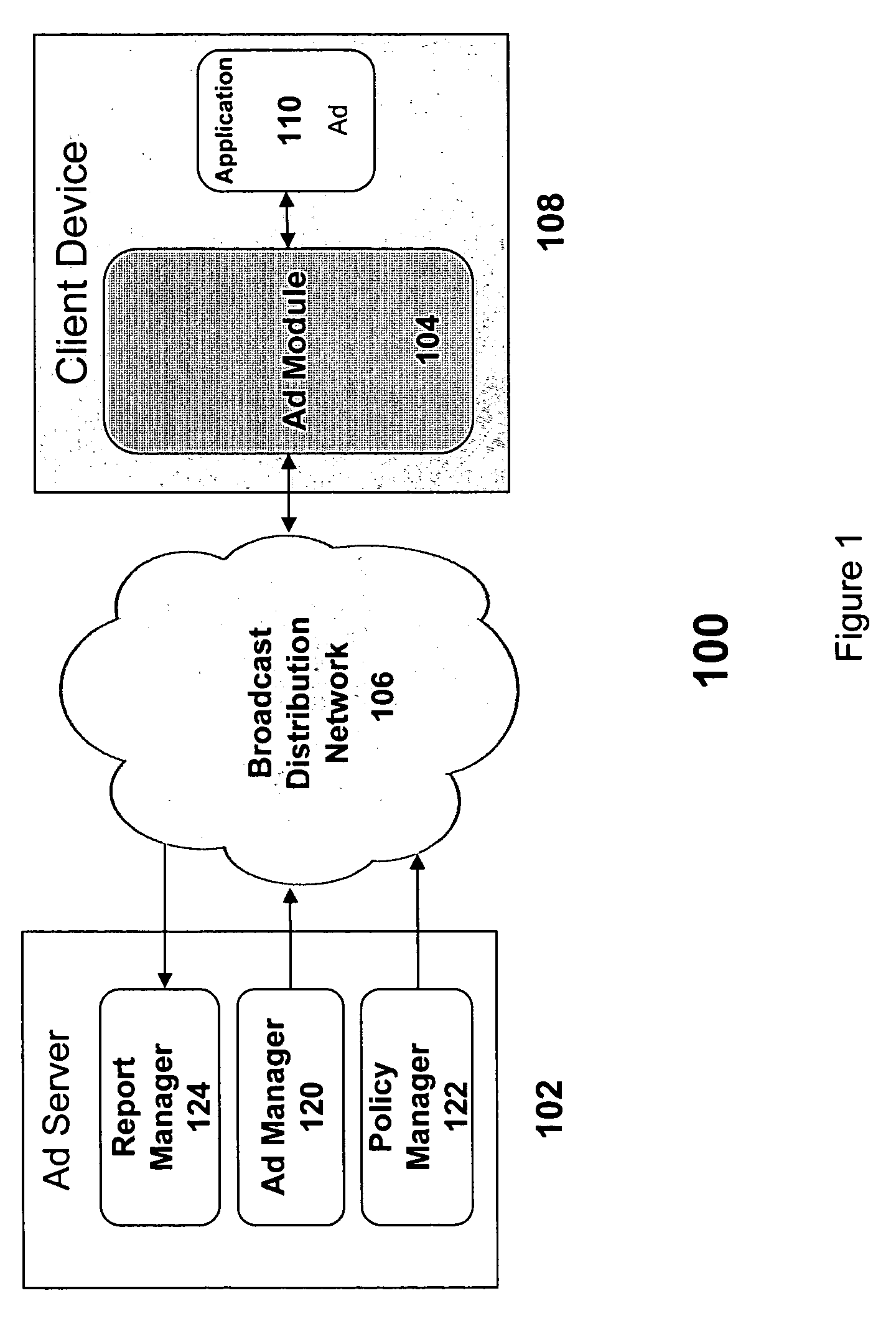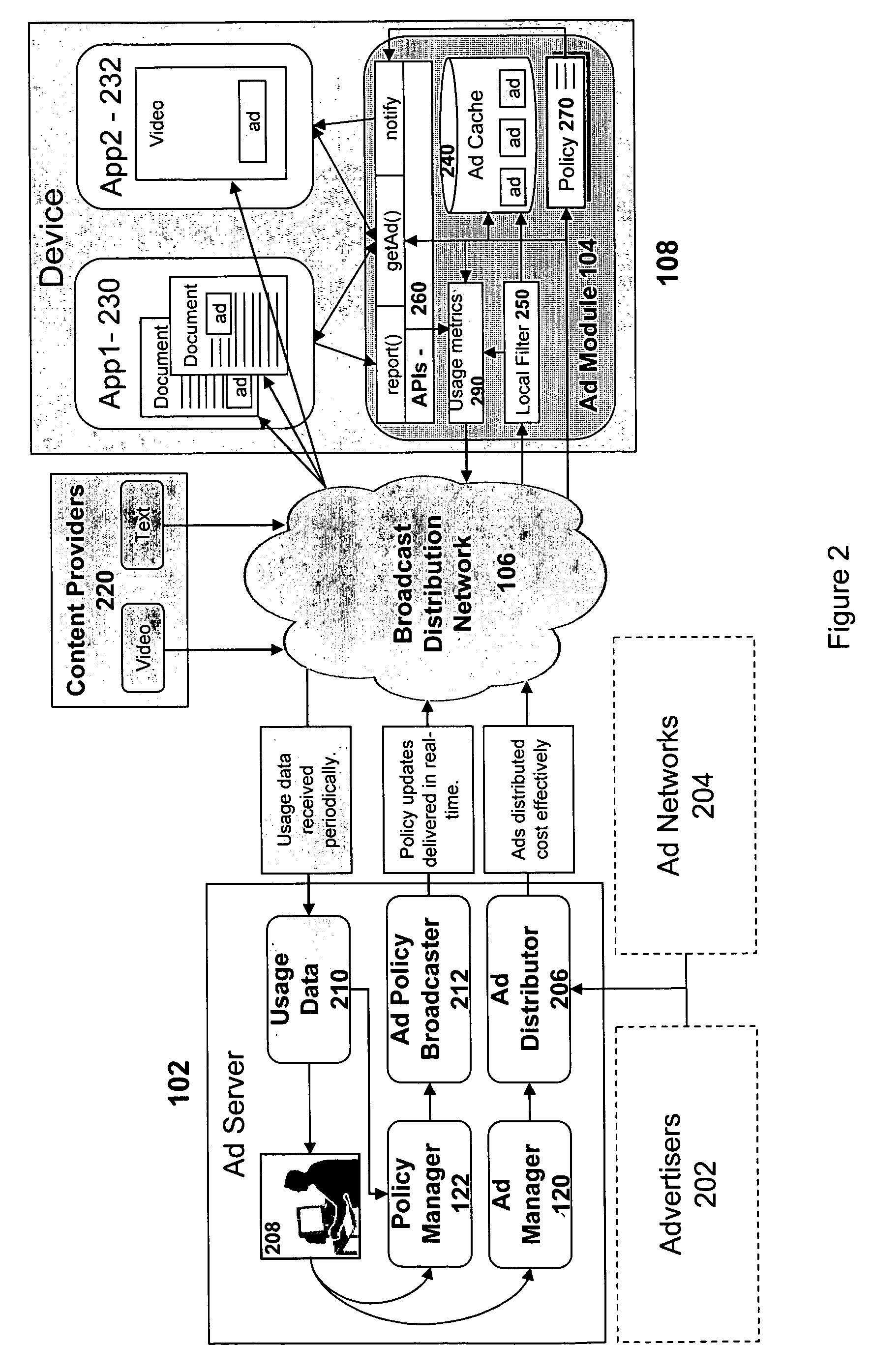In addition, the lower available bandwidth as compared to a high-speed wire line network may place constraints on the type or complexity of the content that can be effectively delivered.
Also, mobile networks typically can not
handle a large number of simultaneous client-initiated
unicast transactions without severe adverse
impact on other network traffic.
Similarly, latency and intermittent
connectivity concerns may
impact the ability of the client device to communicate with an ad
server or other source of content to confirm delivery of content or provide data used to implement an ad presentation policy in a timely manner.
In addition, mobile and other specialized devices typically have characteristics that impose constraints on the storage and
processing of data that are not present when using desktop computers or other devices connected to a high speed bidirectional network.
As a result, a threshold issue in designing an advertising
delivery system is that of the mode of communication (or
content delivery mechanism) between intended recipients and the network infrastructure.
However, note that such feedback may not always be possible in areas where the network coverage is incomplete or
connectivity is unreliable.
However, control of what data to display to an individual user, as well as updating of the content and display control instructions is not as individualized as in a point-to-point communication situation because all recipients typically receive the same information.
Further, in a broadcast environment, feedback from individual recipients is typically not possible, either with regards to confirmation of
receipt of the content or with regards to display and follow up actions taken by the recipient.
Thus, although using
broadcasting for data transfer has some advantages, in a broadcast mode it is often not practical or possible to individually address a transmission to each member of a
large target audience due to network limitations, time restrictions, expense, and / or device characteristics.
These and other factors also limit the ability of the network operator or
service provider to control the circumstances under which ads can be selected and displayed to members of the target audience.
However, such methods typically have significant disadvantages.
One
disadvantage is that such methods typically predetermine (prior to transmission of the data) which ads are to be displayed to the user of the device caching the ads.
However, delivering a new set of ads can be expensive in terms of resource usage, or can require a significant amount of time to transfer the data.
The result is that real-time modification of ad content and ad selection and display criteria is not practical in some communications environments (such as those in which connectivity is intermittent or bandwidth restrictions limit the ability to deliver content or policy in a timely manner).
Furthermore, even if sufficient network resources could be dedicated to updating content and content display policy, the
network connectivity and bandwidth limitations may introduce limits to the effectiveness of certain types of advertising, such as that desired to be displayed contemporaneously with an event or user action (such as a coupon or promotional offer that is intended to be delivered substantially contemporaneously with the end of an event).
However, this approach has several significant drawbacks.
Although effective, this may place an undesirable burden on network resources if a large number of client devices utilize needed bandwidth and other infrastructure to engage in request-response transactions that result in the transmit of such data to the ad provider.
In addition, if certain profile information about the user or device changes frequently, it can be difficult or impossible for the service provider to keep up with those changes and provide the most cost-effective and network resource-efficient ad content and policy instructions.
As a result, the above-described approach is sub-optimal because it is primarily static in nature and unable to adapt to changes in
user profile, events, and / or device characteristics.
However, this method can be expensive and network resource intensive, requiring a significant amount of bandwidth to receive and respond to a large number or requests and provide a rapid turn-around time.
In many networks, especially mobile networks, point-to-point transactions are relatively slow, expensive, and connectivity may be unreliable.
Therefore, because of bandwidth limitations and intermittent connectivity between the
mobile device and the service provider, this approach may not be practical enough to support an effective
targeted advertising program.
Yet another
disadvantage of some of the proposed approaches to delivering and controlling the display of advertising content to mobile and other devices is in the area of device (local)
data cache management.
One approach is to simply empty a cache and replace its contents with an entire new set of advertising content each time new content is provided; however, for many users this may be undesirable as it requires reliable
network connectivity and may require substantial time to complete the process.
Further, and perhaps more importantly, wholesale replacement of previously cached content may not be a desirable approach for providers of that content because some previously cached content may have greater relevance to a specific user than some of the newly provided content.
Although present approaches to the distribution and display of ad content address some of these issues, they all have significant disadvantages.
 Login to View More
Login to View More  Login to View More
Login to View More 


